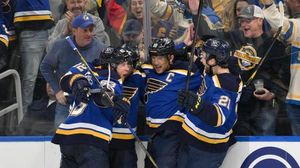Madonna, the enduring pop icon known for her boundary-pushing artistry, has once again ignited controversy with her recent social media post featuring AI-generated images of herself and Pope Francis. On December 13, 2023, the 66-year-old singer shared the provocative images on her Instagram Story, stirring both outrage and amusement among her followers.
The first of the images showed Madonna snuggled up to the 87-year-old Pope, his nose pressed against her cheek, and the caption, "Going Into The Weekend Like..." The second photo depicted the two seemingly getting closer, with Madonna dressed provocatively and the Pope appearing to embrace her with warmth. The accompanying caption read, "Feels Good to Be Seen......" This post was meant to showcase Madonna's often cheeky sense of humor, but the response it garnered was far from universally positive.
Social media users quickly reacted, with some condemning the images as "creepy" and "disrespectful." One user on X (formerly Twitter) expressed, "This is creepy as hell," highlighting the discomfort many felt over the seemingly intimate poses. Another comment echoed this sentiment, stating, "This is just weird as hell… she’s lost it.” Critics were abundant, with reactions varying from mocking to outright hostility, reflecting a growing unease with the depiction of such figures together.
On the flip side, not all responses were negative. Many of Madonna's fans came to her defense, arguing for the humor and irony present within the images. One supportive follower remarked, "What ‘fans’ are actually angry? We love her wicked sense of humor. She simply reposted photos.” These fans embraced Madonna's audacity to intertwine humor with the sacred, viewing it as part of her long-established identity as provocateur.
Madonna's relationship with the Catholic Church has long been fraught and complex. This latest controversy forms part of her decades-long narrative of challenging religious norms. It dates back to 1989 when her music video for "Like a Prayer" prompted severe backlash for its provocative and sacrilegious imagery, including burning crosses and sexualized representations of religious figures. The Vatican was particularly vocal, with Pope John Paul II calling for fans to boycott her concert tours following the video's release.
Since then, Madonna has had myriad run-ins with religious figures and institutions, leading to significant public discourse around art, morality, and freedom of expression. Notably, the reaction to her music video also laid the groundwork for other controversies, including her controversial mock crucifixion staged during her 2006 concert tour, which led Cardinal Ersilio Tonino to suggest she should face excommunication.
Reflecting on her career, Madonna has said, "Artists are here to disturb the peace," encapsulating her approach to creativity. She has not shied away from engaging provocatively with her faith or challenging the expectations placed upon her by society. This most recent incident continues this trend, prompting feedback from both critics and supporters who seem to feel equally passionate about the intersection of Madonna's artistry and her religious imagery.
Despite the backlash, the singer's affinity for pushing boundaries is well understood. Madonna's past antics and her willingness to provoke discussion have defined her as one of pop culture's most resilient figures. Aware of the mixed reception, she has embraced her identity unapologetically, often stating her intention to provoke thought and spark dialogue.
The responses to her post reflect not just her own complicated history with the Church but also wider societal discussions about the role of digital art and artificial intelligence. With many commenting on the ethical concerns of AI-generated images, Madonna's art puts forward questions about when creativity becomes disrespectful or simply humorous mischief.
This incident serves as another chapter in Madonna’s long-running narrative with the Catholic Church and highlights the balance between artistic expression and religious sensitivity. Just as her past works attempted to upend and challenge norms, these latest AI images have again sparked conversation about the nature of faith and the right to express oneself through art, combined with the modern capabilities of technology.
For now, observers are left with potent questions: Can humor exist at the intersection of faith and art? And where should the line be drawn when it involves figures with such significant cultural and religious weight as the Pope? While Madonna may find herself facing backlash, she continues to cultivate her brand of audacity and intrigue, unafraid to tread controversial paths.



